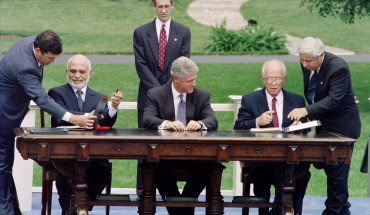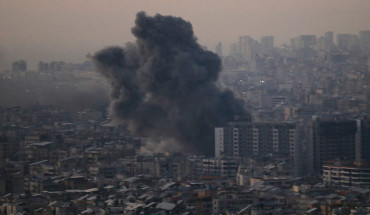The commander of Khatam al-Anbia Construction Base, the main engineering arm of the Islamic Revolution Guards Corps (IRGC), has said that the conglomerate will complete 40 mega-projects in the current Iranian year, which began on March 21. General Ebadollah Abdollahi made the remarks in the western Iranian province of Lorestan, where he spoke at a meeting on the need for “Resistance Economy”. According to Abdollahi, the organization’s major projects this year are in the oil and gas industry, water management, railway and road construction, port and mine development, oil and gas pipelines, and information technology. He pointed out that the conglomerate will implement 10 projects for the Oil Ministry with a total cost of $22 billion in investment. He also emphasized that a key priority for Khatam al-Anbia this year is to complete the Persian Gulf Star oil refinery, which he claimed would meet a half of the country’s gasoline need.
Comment: The term “resistance economy” is often used by Iran’s clerical and military establishments to emphasize policies that help promote self-sufficiency to counter international economic sanctions. As the Trump administration is ratcheting up sanctions on Iran and is threatening to walk away from the nuclear deal, the IRGC is further entrenching its economic clout in the country. The message from IRGC leaders is clear: Rather than relying on foreign companies that might withdraw from projects because of US sanctions, the IRGC should take the lead in carrying out all major national projects in key industries.
In early 2014, Supreme Leader Ali Khamenei issued a decree that outlined general policies for the “resistance economy” that required the government to diversity Iran’s exports, reduce the country’s dependence on foreign imports of raw materials, and develop knowledge-based high-tech industries. The Supreme Leader also named last Iranian year the “Year of Resistance Economy: Action and Implementation.” And in the run-up to last year’s presidential election, Khamenei strongly criticized the Rouhani government’s economic performance. “If all necessary measures regarding the resistance economy had been implemented, we would have witnessed a tangible difference in the country’s economic conditions and in people’s lives,” he said.
Since the lifting of nuclear sanctions on Iran in the wake of the 2015 nuclear agreement, IRGC leaders and media outlets have consistently been rejecting President Hassan Rouhani’s claim that anti-Iran sanctions are irreversible and been calling on the government to strengthen Iran’s “resistance economy” to counter new US sanctions.
The IRGC is a strong proponent of the so-called “economic resistance” policies because it has benefited from them immensely. The IRGC is not only Iran’s most powerful military force but also dominates the country’s key economic sectors, such as energy, construction, telecommunication, media, mining, electronics, automobile, banking, nuclear, and more. While IRGC leaders claim their involvement in the economic sector benefits the Iranian people and economy, in reality it spends most of the revenues on military expenditures at home and abroad.
Khatam al-Anbia, and other IRGC-affiliated companies, benefited greatly from the privatization program of former President Mahmoud Ahmadinejad. In 2006, the company secured deals worth at least $7 billion in the oil, gas, transportation and other sectors. In October 2007, the US Department of Treasury designated Khatam al-Anbia and several other IRGC companies under EO 13382 as part of a plan to counter Iran’s bid for nuclear capabilities and support for terrorism. And in February, 2010, the Treasury took further action against Khatam al-Anbia by designating the company’s commander, General Rostam Ghassemi, and its subsidiary companies. As the Treasury noted, the IRGC uses profits from Khatam al-Anbia for its illicit activities, including nuclear proliferation and support for terrorism in the region.
According to Tasnim News Agency, the IRGC Aerospace Force recently helped the Energy Ministry in cloud-seeding operations to fight drought. The IRGC Ground Force has also carried out extensive plans in recent years for development of border provinces and underprivileged areas, such as the southeastern province of Sistan and Baluchestan.
In February, Abdollahi also revealed that Khatam al-Anbia was currently working with 5,000 companies to jointly implement construction and other projects. He added that nearly a quarter million people work on Khatam al-Anbia’s projects across the country. He further claimed that the government owes Khatam al-Anbia about $10 million.
Abdollahi’s remarks came after Iran’s defense minister on January 20 said that Khamenei has ordered the IRGC to curtail its growing business empire. Soon after Hatami’s comments, a senior IRGC commander downplayed them, arguing that all IRGC economic activities are within the legal framework and “relevant” to their mission. He said his organization will only further increase its economic projects in Iran.
The debate over IRGC’s economic role is not new. In recent years, Rouhani has repeatedly stressed the need that the IRGC should not dominate the Iranian economy. But in practice, the IRGC has only expanded its economic activities. As Abdollahi indicated, Khatam al-Anbia is awarded major projects by the Rouhani government, including in the lucrative energy sector.
The Middle East Institute (MEI) is an independent, non-partisan, non-for-profit, educational organization. It does not engage in advocacy and its scholars’ opinions are their own. MEI welcomes financial donations, but retains sole editorial control over its work and its publications reflect only the authors’ views. For a listing of MEI donors, please click here.












